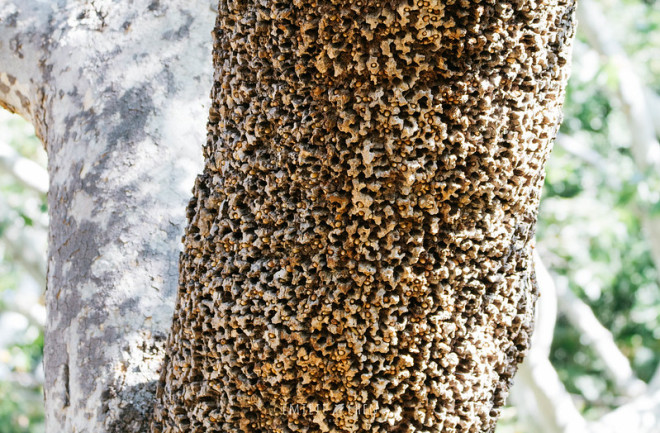If this image gives you the willies, you may have what has been called trypophobia — the fear of clusters of small holes. It has been hypothesized that this fear stems from a resemblance of the holes to patterns on poisonous animals. Although thousands of people find images like this really disturbing, it’s not enough to make it a phobia, which is a learned response that can be unlearned.
These scientists studied preschoolers to determine whether trypophobia is an instinctive human response that can never be unlearned. To do this, they showed the kids pictures of venomous animals with and without overlaid images of trypophobia-inducing holes. Because only the pictures with holes upset the kids, the researchers believe that the fear is innate, and not a learned association with poisonous animals. So there you have it: If that tree makes you feel horrible, there is nothing you can do about it.
“In the past 10 years, thousands of people have claimed to be affected by trypophobia, which is the fear of objects with small holes. Recent research suggests that people do not fear the holes; rather, images of clustered holes, which share basic visual characteristics with venomous organisms, lead to nonconscious fear.
In the present study, both self-reported measures and the Preschool Single Category Implicit Association Test were adapted for use with preschoolers to investigate whether discomfort related to trypophobic stimuli was grounded in their visual features or based on a nonconsciously associated fear of venomous animals.
The results indicated that trypophobic stimuli were associated with discomfort in children. This discomfort seemed to be related to the typical visual characteristics and pattern properties of trypophobic stimuli rather than to nonconscious associations with venomous animals. The association between trypophobic stimuli and venomous animals vanished when the typical visual characteristics of trypophobic features were removed from colored photos of venomous animals.
Thus, the discomfort felt toward trypophobic images might be an instinctive response to their visual characteristics rather than the result of a learned but nonconscious association with venomous animals. Therefore, it is questionable whether it is justified to legitimize trypophobia.”

